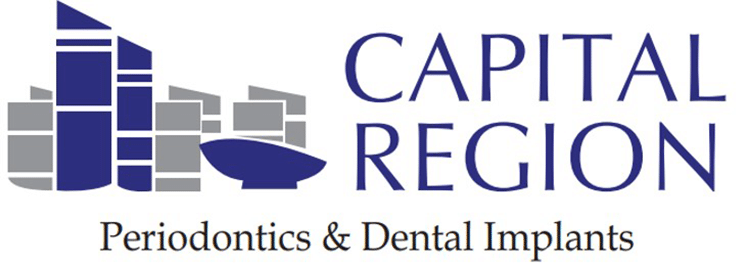January 31, 2025

Oral health is a critical part of your overall well-being, yet it’s often overlooked until problems arise. Conditions like gingivitis and periodontitis are common, but they can be easily misunderstood or mistaken for each other. While they are both forms of gum disease, they differ in terms of severity, symptoms, and treatment options.
This blog will help you understand the differences between gingivitis and periodontitis, explore their causes and complications, and provide practical tips to maintain oral health. Whether you’re a dental care enthusiast or just someone who wants a healthier smile, read on to empower yourself with knowledge about these two conditions.
What Are Gingivitis and Periodontitis?
Gingivitis and periodontitis are stages of gum disease that impact the health of your gums and supporting structures of your teeth.- Gingivitis is the earliest stage of gum disease. It typically involves inflammation of the gums caused by plaque buildup along the gumline. The condition is reversible with proper care.
- Periodontitis, on the other hand, is an advanced form of gum disease. If untreated, gingivitis can progress to periodontitis, leading to damage of the soft tissue and bone supporting your teeth. At this stage, the disease is often irreversible and may require more intensive treatment.
Gingivitis in Focus: Causes, Symptoms, and Treatment
What Causes Gingivitis?
Gingivitis occurs primarily due to inadequate oral hygiene, which allows plaque—a sticky film of bacteria—to accumulate along the gumline. Other contributing factors include:- Hormonal changes (e.g., during pregnancy or menopause)
- Smoking
- Certain medications
- Poor nutrition
- Systemic conditions like diabetes
Recognizing Symptoms of Gingivitis
Some indicators of gingivitis include:- Swollen, tender gums
- Red or darkened gums
- Gums that bleed during brushing or flossing
- Persistent bad breath
Treatment Options for Gingivitis
Thankfully, gingivitis can be reversed with proper care:- Brushing and flossing regularly
- Using an antibacterial mouthwash
- Visiting the dentist for professional cleanings
- Addressing lifestyle factors, such as quitting smoking
Periodontitis Explained: Progression, Symptoms, and Complications
How Gingivitis Advances Into Periodontitis
When gingivitis is left untreated, it evolves into periodontitis. At this stage, plaque hardens into tartar, which encourages further bacterial growth. These bacteria release toxins that damage soft tissues and bone, causing the gums to pull away from the teeth and forming pockets that harbor even more bacteria.Symptoms of Periodontitis
Advanced gum disease exhibits more severe symptoms, such as:- Deep pockets forming between teeth and gums
- Chronic bad breath
- Painful chewing
- Loose or shifting teeth
- Gum recession, exposing more of the tooth or tooth root
Complications of Periodontitis
If untreated, periodontitis can lead to:- Tooth loss
- Deterioration of jawbone
- Increased risk for systemic conditions, such as heart disease, diabetes, and respiratory issues, due to the spread of inflammation-causing bacteria
Risk Factors for Gingivitis and Periodontitis
Certain habits and conditions can increase your likelihood of developing these gum diseases. These include:- Poor oral hygiene practices (infrequent brushing and flossing)
- Smoking or tobacco use
- Stress, which can weaken your immune system
- Genetic predisposition to gum disease
- Systemic diseases like diabetes, which affect gum health
- Medications that reduce saliva flow, allowing bacteria to thrive
Why Early Detection and Regular Dental Check-Ups Matter
Both gingivitis and periodontitis can be managed effectively when detected early. Routine dental visits are essential for:- Removing plaque and tartar buildup that can’t be addressed through regular brushing and flossing
- Monitoring gum health to catch gingivitis before it progresses
- Providing customized advice on oral hygiene practices
How to Maintain Good Oral Health: Preventive Tips
Preventing gum disease is easier than you might think. Here's how:- Brush Twice a Day: Use a fluoride toothpaste and a soft-bristled toothbrush.
- Floss Daily: Reach the areas your toothbrush can’t, cleaning between your teeth.
- Use Mouthwash: Antibacterial mouthwash can help reduce plaque and bacteria.
- Eat a Healthy Diet: Consume foods rich in vitamins C and D to support gum health.
- Stay Hydrated: Drinking water helps wash away food particles and bacteria.
- Quit Smoking: This not only improves your gum health but also your overall health.
- Visit Your Dentist Regularly: Schedule cleanings and check-ups at least twice a year.
When Should You Seek Professional Help?
If you notice persistent symptoms, such as bleeding gums, bad breath, or signs of gum recession, it’s time to consult a dental professional. Prompt evaluation and treatment can prevent further complications and preserve your oral health.The Importance of Oral Hygiene for a Lifetime of Smiles
Taking care of your gums is just as important as taking care of your teeth. By practicing good oral hygiene, understanding the early signs of gingivitis, and seeking timely professional care, you can prevent the progression of gum disease and maintain a bright, healthy smile.Frequently Asked Questions About Gingivitis and Periodontitis
Is gingivitis reversible?
Yes, gingivitis is reversible with good oral hygiene practices and professional cleanings. Addressing the symptoms early prevents progression to periodontitis.Can I treat periodontitis at home?
No, periodontitis requires professional treatment. Dentists may recommend procedures like deep cleaning, scaling, and root planing, along with potential surgical interventions in severe cases.Contact Capital Region Periodontics and Dental Implants
If you’ve noticed signs of gingivitis or periodontitis, Capital Region Periodontics can provide treatment to reverse or manage your condition. Call or contact us today to learn more and schedule an appointment.

